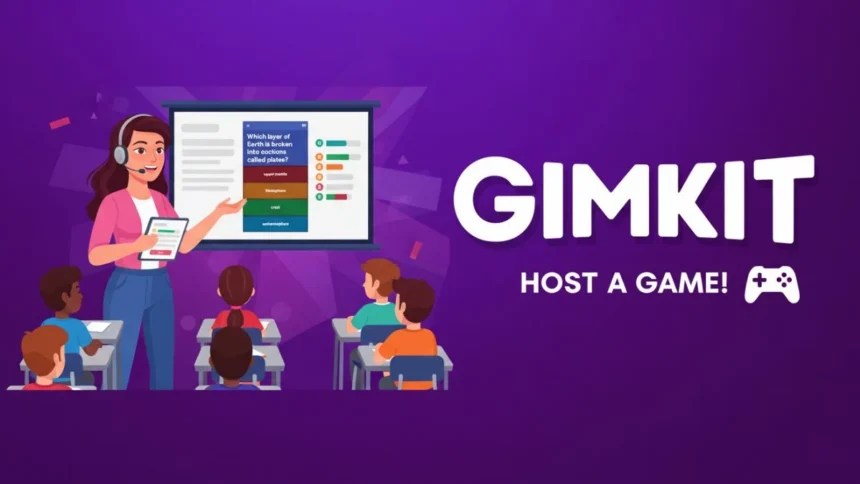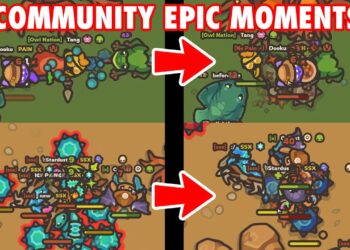In modern classrooms, where attention spans compete with endless distractions, teachers constantly seek creative ways to make learning exciting. One platform has quietly transformed ordinary lessons into unforgettable experiences — Gimkit.
And at the center of every great Gimkit session stands the gimkit host — the conductor, the motivator, the one who turns knowledge into a thrilling adventure. Whether you’re a teacher, a tutor, or a student leader, mastering this role can revolutionize how learning feels for everyone involved.
This guide dives deep into what it takes to become an exceptional gimkit host — how to set up, run, and elevate your sessions so they inspire engagement, laughter, and genuine understanding.
Understanding the Role of a Gimkit Host
Being the gimkit host is more than just pressing “Start Game.” It’s about designing a learning experience that blends fun, focus, and friendly competition. Think of yourself as a DJ at an academic party — controlling the beats, adjusting the flow, and keeping the crowd energized.
The host chooses the topic, builds or selects the quiz (“Kit”), and decides on the game mode — whether it’s a fast-paced individual challenge or a team-based showdown. Once the game begins, the host guides players, observes progress, and maintains the spirit of fair play.
Why the Host Role Is Crucial
The difference between a good session and a great one often lies in the host’s energy. A great gimkit host can transform even the driest review topic into an engaging experience. Students stay alert, motivated, and emotionally invested. Here’s why hosting matters so much:
- Immediate feedback: Hosts can see who’s thriving and who needs extra support.
- Dynamic engagement: The game format keeps every participant active — not just a few.
- Adaptable learning: The host can modify the session on the fly, extending time, pausing for discussion, or switching modes.
- Memorable learning: When students associate excitement with content, they retain it longer.
The host doesn’t just run the game — they create a shared learning moment.
How to Set Up and Lead as a Gimkit Host
Becoming a confident gimkit host starts with understanding the setup process. The platform is intuitive, but your preparation and presence make it shine.
Step 1: Create or Select Your Kit
Every Gimkit session begins with a Kit — a set of questions based on your lesson goals. You can create one from scratch or choose from community-made Kits. Keep your questions clear, concise, and challenging enough to promote critical thinking.
A good rule of thumb is to include 15–30 questions for a lively 15-minute game. Mix multiple-choice and short-answer formats to keep variety high.
Step 2: Choose the Game Mode
Here’s where creativity comes into play. Gimkit offers multiple modes like Classic, Trust No One, and The Floor Is Lava — each with its own twist.
As the host, decide whether you want players competing individually or in teams. For review sessions, team modes build collaboration. For quick knowledge checks, solo modes keep the pace brisk. Tailor the mode to the goal of your lesson.
Step 3: Adjust Game Settings
Before launching, tweak your settings — duration, cash goal, upgrades, or power-ups. You can allow late joiners or keep the field closed once the game starts.
Small adjustments can change the mood dramatically. Short games work well for warm-ups. Longer ones are perfect for in-depth review. Experiment to see what your students enjoy most.
Step 4: Share the Code and Launch
Once ready, the Gimkit dashboard generates a game code. Share it with your class — verbally, via projector, or on your online platform. Watching players join in real-time builds excitement.
Before hitting “Start,” explain the rules clearly. Set expectations for respectful play and remind everyone that fun and learning go hand in hand.
Step 5: Manage the Live Session
This is where your hosting skills truly shine. Monitor scores, adjust pacing, and keep morale high. Narrate the action: praise correct answers, highlight strategies, and cheer on underdogs.
Your voice and enthusiasm shape the energy of the session. If a player disconnects or the room gets chaotic, you can pause or restart. Remember, you’re in control — both technically and emotionally.
Step 6: Review and Reflect
After the game ends, take a moment to review the post-game data. Gimkit provides detailed reports showing which questions challenged players the most and how individuals performed.
Use this information for follow-up lessons or targeted review. That’s where the magic happens — turning gameplay into real growth.

Creative Tips to Elevate Your Hosting
Even though Gimkit’s design is engaging, the host brings it to life. Here are some tried-and-true ways to make your sessions unforgettable.
1. Theme Your Session
Add personality to your game. Turn it into an event — “Space Race,” “Trivia Olympics,” or “Math Madness.” Decorate your slides or classroom to match. Themed sessions make learning feel like storytelling.
2. Mix Up Game Modes
Avoid repetition fatigue by alternating between different modes each week. One day could be a cooperative challenge; the next could be every-player-for-themselves chaos. Keeping variety maintains curiosity.
3. Encourage Team Collaboration
Divide your class into groups and let them brainstorm answers before submitting. This not only deepens understanding but also builds communication and teamwork skills.
4. Add Real-World Rewards
A little extrinsic motivation goes a long way. Offer fun incentives: homework passes, leaderboard shout-outs, or the right to choose tomorrow’s review topic. It makes the stakes feel real.
5. Include Student-Created Questions
Invite your learners to contribute one question each before the game. Not only does it make them feel involved, but crafting questions also deepens comprehension. Players love seeing their own submissions pop up mid-game.
6. Use Intermissions for Reflection
Halfway through, pause and ask: “What’s been the toughest question so far?” or “Which strategy worked best?” Short reflections turn play into active thinking and reinforce understanding.
Common Challenges and How to Solve Them
Even experienced hosts encounter a few bumps. Here’s how to navigate the most common ones.
Connectivity or Tech Issues
Internet lag can interrupt flow. Encourage participants to close unnecessary tabs and ensure devices are updated. As host, have a backup plan — maybe an offline discussion while waiting for reconnection.
Off-Task Players
Every class has its class clown. If names or behaviors cross boundaries, use the host tools to remove or rename players. Set expectations early: “Creative names welcome, but keep it clean.”
Energy Drop Mid-Game
Sometimes, the room quiets down. Spark it up again with encouragement: “Double points for the next three questions!” or “Let’s see who can catch up in the next minute!” Small surprises re-energize the room.
Repetition Fatigue
Running Gimkit too often without variety can dull excitement. Alternate with other tools or mix new Kits and themes. The key is balance — consistency with a twist.
Post-Game Disengagement
After the final leaderboard appears, don’t just move on. Celebrate! Applaud participants, discuss the hardest question, and highlight learning moments. Ending strong makes students look forward to the next round.
The Educational Value Behind the Game
When you become a thoughtful gimkit host, you’re not only creating fun — you’re transforming pedagogy. Game-based learning taps into deep cognitive and emotional benefits.
1. Active Participation
Unlike traditional review sheets, Gimkit demands involvement from everyone. Each player answers, strategizes, and reacts in real time. No passive learners here — everyone’s part of the action.
2. Immediate Feedback Loop
As the host, you can identify trends instantly. If many players miss the same question, it signals a concept worth revisiting. This quick insight helps teachers personalize instruction faster than standard assessments ever could.
3. Motivation Through Competition
Healthy competition sparks intrinsic motivation. Students aren’t just memorizing facts — they’re competing, strategizing, and celebrating each win. That emotional involvement cements memory.
4. Collaborative Learning
Team modes encourage students to discuss, share reasoning, and combine strengths. When players explain their thought process to teammates, they reinforce their own understanding.
5. Stress-Free Assessment
Because it feels like a game, Gimkit reduces anxiety often associated with tests or quizzes. Learners can demonstrate knowledge in a low-pressure environment — making assessment more authentic and inclusive.
Advanced Hosting Techniques
Once you’ve mastered the basics, take your hosting to the next level with these advanced techniques.
Use Data Strategically
Dive into post-game analytics. Identify which questions had the lowest accuracy and use them as starting points for future lessons. Over time, these patterns paint a powerful picture of student progress.
Integrate with Lesson Plans
Don’t treat Gimkit as a one-off activity. Use it to introduce new topics, review prior learning, or assess mastery at the end of a unit. A good host weaves games naturally into the teaching rhythm.
Blend Storytelling and Gameplay
Frame each session as part of an ongoing narrative: “Today, we’re explorers gathering clues!” or “You’re detectives racing to solve the mystery of fractions.” Storytelling transforms a simple quiz into an immersive mission.
Encourage Reflection and Growth
After each game, ask players what strategies worked best or how they improved from last time. This metacognitive element deepens the learning impact.
The Impact of a Great Gimkit Host
The classroom energy during a well-hosted Gimkit session is electric. Laughter, focus, and friendly rivalry fill the air. Students who might normally fade into the background suddenly light up, eager to participate.
As the gimkit host, you’re cultivating a growth-oriented environment. Mistakes become part of the fun, not something to fear. Collaboration grows naturally. Knowledge retention improves — not because students had to memorize, but because they wanted to remember.
Beyond content mastery, hosting builds soft skills: communication, adaptability, teamwork, and sportsmanship. These lessons reach far beyond the classroom walls.
Conclusion
To be a great gimkit host is to be part educator, part entertainer, and part strategist. You guide energy, manage flow, and inspire confidence — all while reinforcing academic content.
When done well, Gimkit becomes more than a quiz tool. It turns classrooms into communities of curiosity. It transforms review into excitement. It makes learning feel like play — and play feel like progress.
So next time you prepare your lesson, consider putting on your host’s hat. Set the tone, ignite the room, and lead your learners through an unforgettable journey. Because in the end, being the gimkit host isn’t just about running a game — it’s about creating moments that make learning come alive.
Also read :Exploring the Pizza Edition GitHub Project – What Makes It Special?















